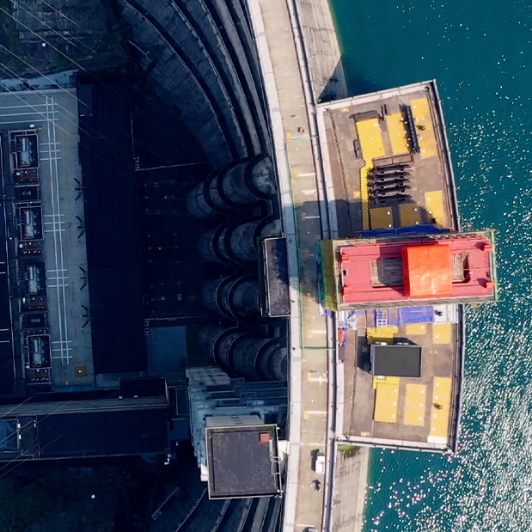Published: Jul 07, 2025
Applying AI to asset management
Part 3 – Asset intelligence: An NCS whitepaper
Effectively deploying AI and digital twins requires more than just technology: it calls for alignment across data, infrastructure and teams.
In Part 3 of our asset management whitepaper, we cover a framework for success, real-world applications and use cases for how AI is actively shaping asset-intensive operations and the transformative impact of GenAI.
A framework for success
NCS recommends a phased framework. Organisations should:
- Assess data readiness – ensuring access to accurate sensor, spatial, and operational data.
- Prioritise business problems, aligning AI use cases to operational pain points such as unplanned downtime or inefficient maintenance.
- Consider how scalable cloud infrastructure, offered by hyperscaler providers such as AWS, Microsoft or Google Cloud, might add critical value with storing, analysing, and acting on data in real time.
- Focus on alignment with cross-functional collaboration between engineering, IT and field operations.
AI for asset management: real-world applications
AI is now actively reshaping asset-intensive operations, delivering value across the asset lifecycle, from predictive maintenance to generative knowledge systems.
In the following examples of work delivered by NCS, we share how our team has set a benchmark for excellence with delivering intelligent technology solutions and services for our clients.
Intelligent outcomes for utility operators
Predictive analytics at Melbourne Water
At Melbourne Water, predictive analytics are being used to anticipate turbidity issues in recycled water networks up to three days in advance. Integrated with a digital twin platform, this system achieves 80% prediction accuracy and allows proactive interventions.
Predictive pump maintenance at North East Water
Likewise, North East Water moved from reactive to predictive pump maintenance through machine learning, significantly reducing after-hours callouts by approximately 16 out-of-business-hour pump inspections and repairs per pump per year.
AI/ML integrations for a rail operator
AI is being embedded into inspection systems. NCS worked with a rail operator to integrate AI/ML models into its track monitoring process. Supported by MLOps pipelines, the system achieved over 90% accuracy in identifying rail defects, significantly reducing false positives and enabling timely preventive repairs.
AI as an enabler for safety excellence
Safety-critical industries are also seeing gains.
AI video monitoring for a global raw materials company
A global raw materials company collaborated with NCS to roll out an AI-driven video monitoring platform across 750 cameras. With 11 embedded safety algorithms, the solution improved site inspections and compliance, reducing reliance on manual surveillance.
AI-powered foreign object debris (FOD) detection at Changi Airport
Foreign Object Debris (FOD) on runways can pose safety risks to airside operations. To enhance runway safety, NCS and Changi Airport Group co-developed the iFerret™ 2.0, an AI-powered FOD detection system. The system uses high-definition electro-optical sensors, real-time analytics, and machine learning to detect and verify FOD efficiently. It also provides automated alerts which enable the swift removal of FOD, ensuring minimal disruption to runway operations. Designed for 24/7 operations in various weather conditions, iFerret™ contributes to a safer and more efficient airside management.
GenAI: A game-changer for transformative impact
Generative AI is also transforming knowledge access. Companies are deploying copilots that can retrieve inspection records, design documents and maintenance logs; help new employees onboard faster; and enable field staff to make informed decisions in real time. Some are even using AI to auto-generate work instructions and extract trends from historical data to improve operational consistency.
And in planning, generative models are beginning to simulate expansion or maintenance scenarios, evaluating impacts on service, cost and emissions, while automatically generating downstream tasks.
This article is an extract from our whitepaper: The new era of asset intelligence: Cloud-connected, AI-driven, future-ready for energy, utilities and resources clients that unpacks how AI, digital twins, and cloud-native platforms are reshaping enterprise asset management. Through real-world examples from NCS clients, it offers a practical framework for organisations to adopt predictive, data-driven strategies that deliver measurable gains.




